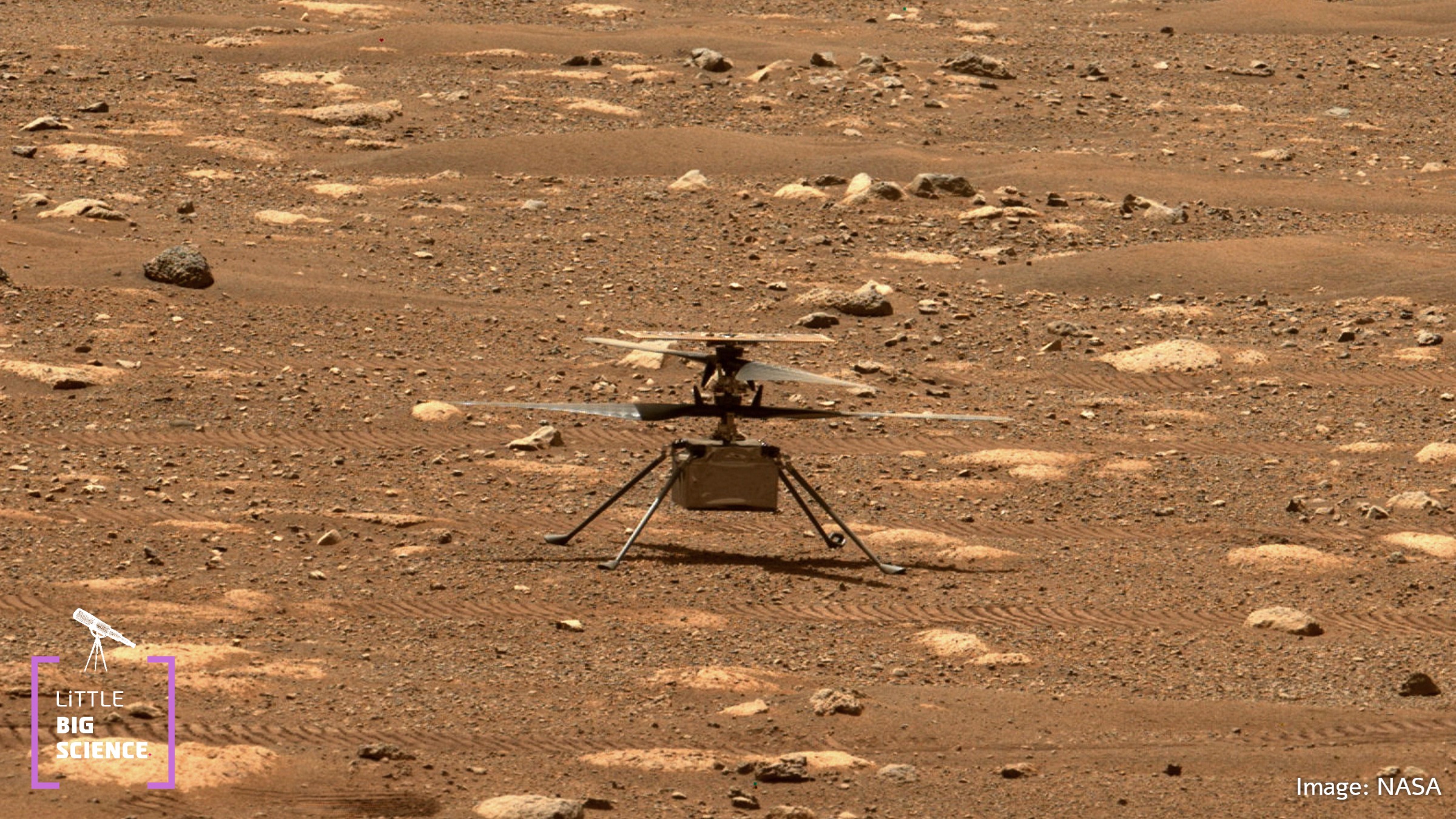
Throughout history, humans have launched many spacecraft and robotic vehicles into space, but yesterday—for the first time in history—the capability of helicopter flight on Mars was demonstrated. This demonstration makes this helicopter the first motorized "air"-craft to fly in the skies of another planet.
Advertisement
In mid-February 2021, NASA’s “Mars 2020” mission [1] landed on the Red Planet. Inside the capsule was the robotic rover Perseverance, which is driving across Mars and sending us spectacular photographs—and even high-definition video. The rover is expected to begin its science mission soon, which includes drilling and analyzing the soil. Before it could start exploring Mars, however, Perseverance had another task: to support the flight experiment of the helicopter Ingenuity. During the Mars landing, Ingenuity was attached to Perseverance, which carried it to the test site. On April 3, 2021 the rover set it on the ground, drove away, and then photographed the helicopter [2].
Ingenuity is a small robotic helicopter. It is roughly 20 cm wide and 50 cm tall, with a mass of 1.8 kg. It looks like a shoebox with two rotors and a solar panel above it, and four slender “legs” below (see the article's featured image). Despite its simple appearance, Ingenuity is a sophisticated machine because conditions on the Red Planet differ so much from those on Earth.
Although Martian gravity is only one-third of Earth’s, hovering there is more difficult because of the thin atmosphere. When a rotor spins on Earth, the air pushed downward and flowing around the blades generates lift. Naturally, the less air beneath the rotor, the less lift is produced. This is why terrestrial helicopters cannot fly at very high altitudes, where the air is thinner: less air means less lift. Mars’s atmosphere is far thinner than Earth’s, so to generate the required lift Ingenuity’s blades must rotate about five times faster than they would on Earth.
Navigation on Mars is also challenging, because the usual Earth-based methods are unavailable. Mars’s magnetic field is neither uniform nor strong enough to leverage the use of a compass. In addition, because no dedicated satellite constellation orbits Mars, GPS cannot be used [3]. Instead, Ingenuity will rely on a combination of tools—such as a Sun sensor, cameras, and accelerometers—to estimate its position.
It is important to note that Ingenuity’s primary goal is not to study Mars itself, but to demonstrate powered flight on Mars. This proof-of-concept will pave the way for future drones and aircraft. Photographs from the flight can be viewed here [4], and a video of the flight is available here [5].
Besides demonstrating flight and solving the associated engineering challenges, Ingenuity has another assignment: imaging the Martian surface. The helicopter is equipped with a high-resolution camera that can photograph the terrain in much greater detail than orbiting satellites, which can create a high-quality map of the planet.
English editing: Elee Shimshoni
References:







